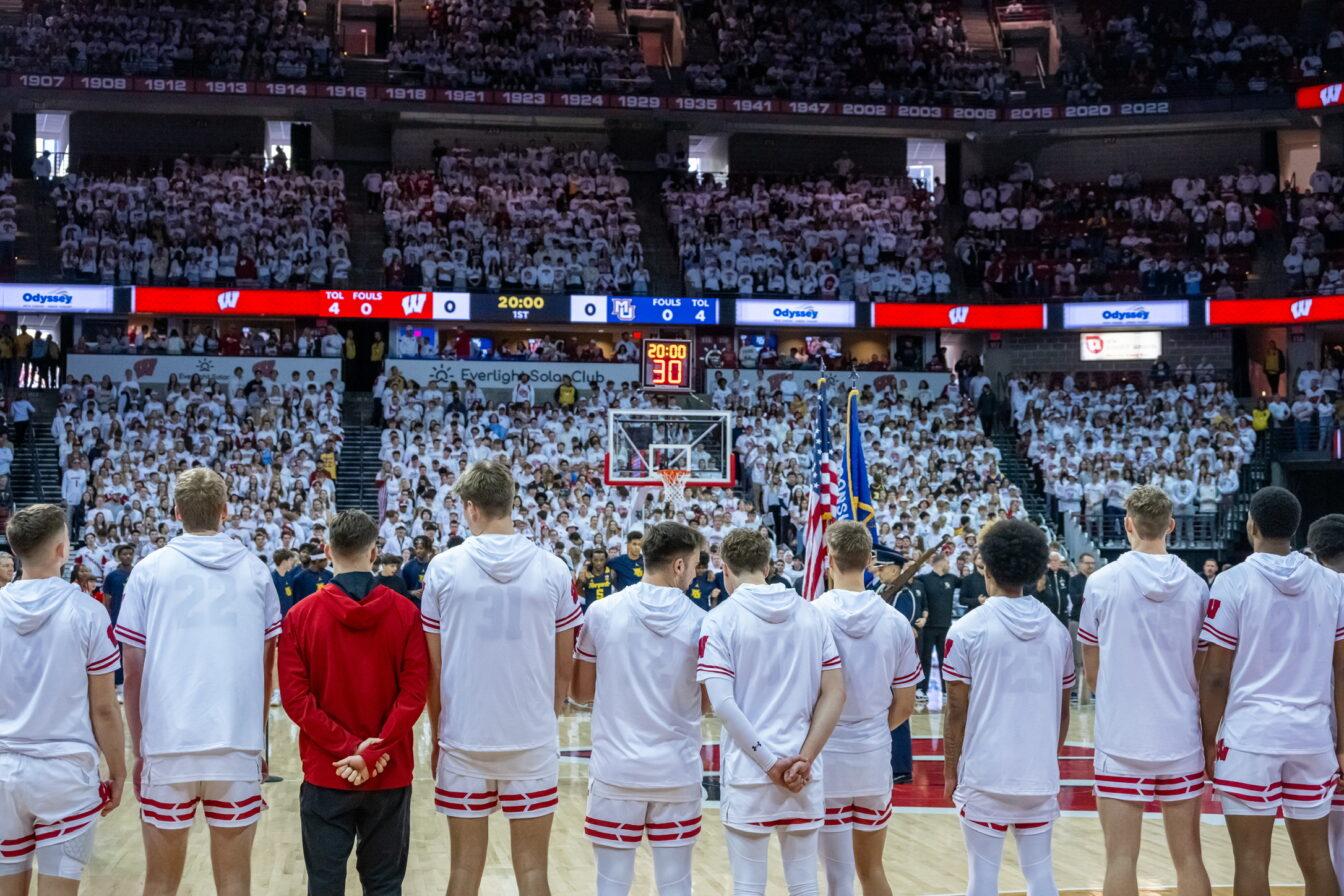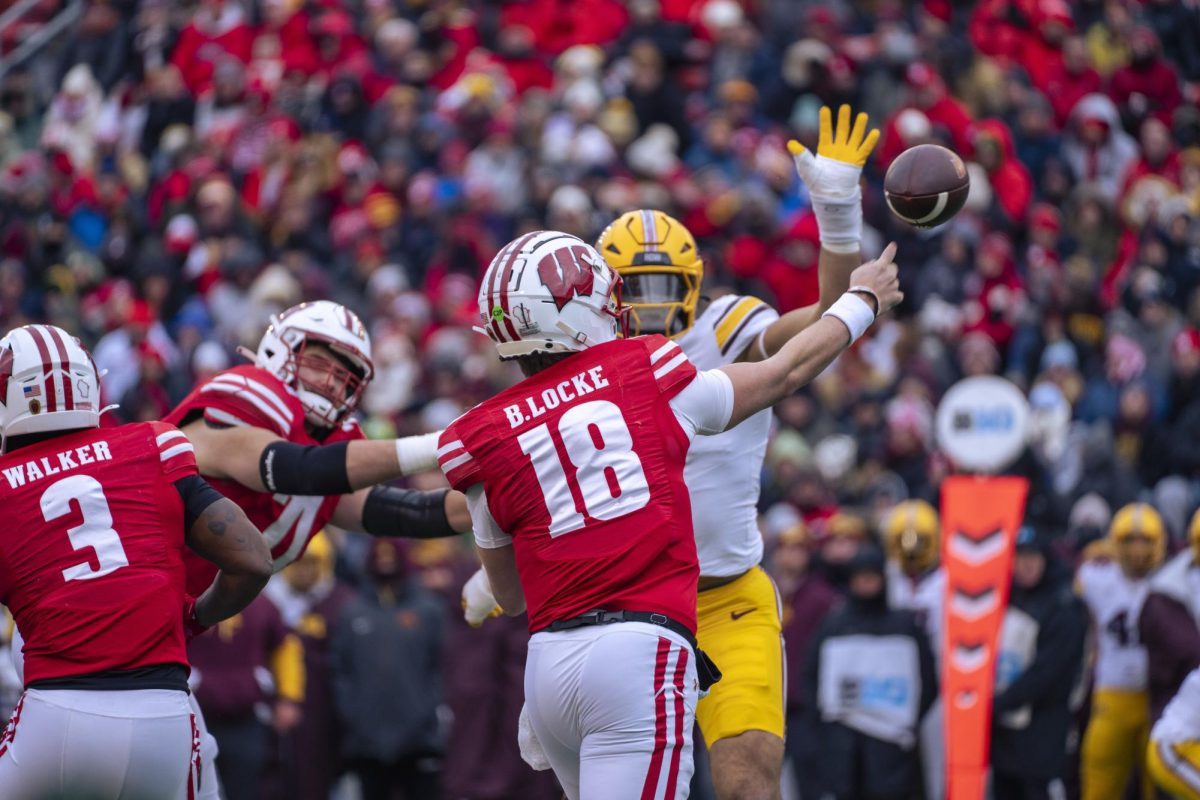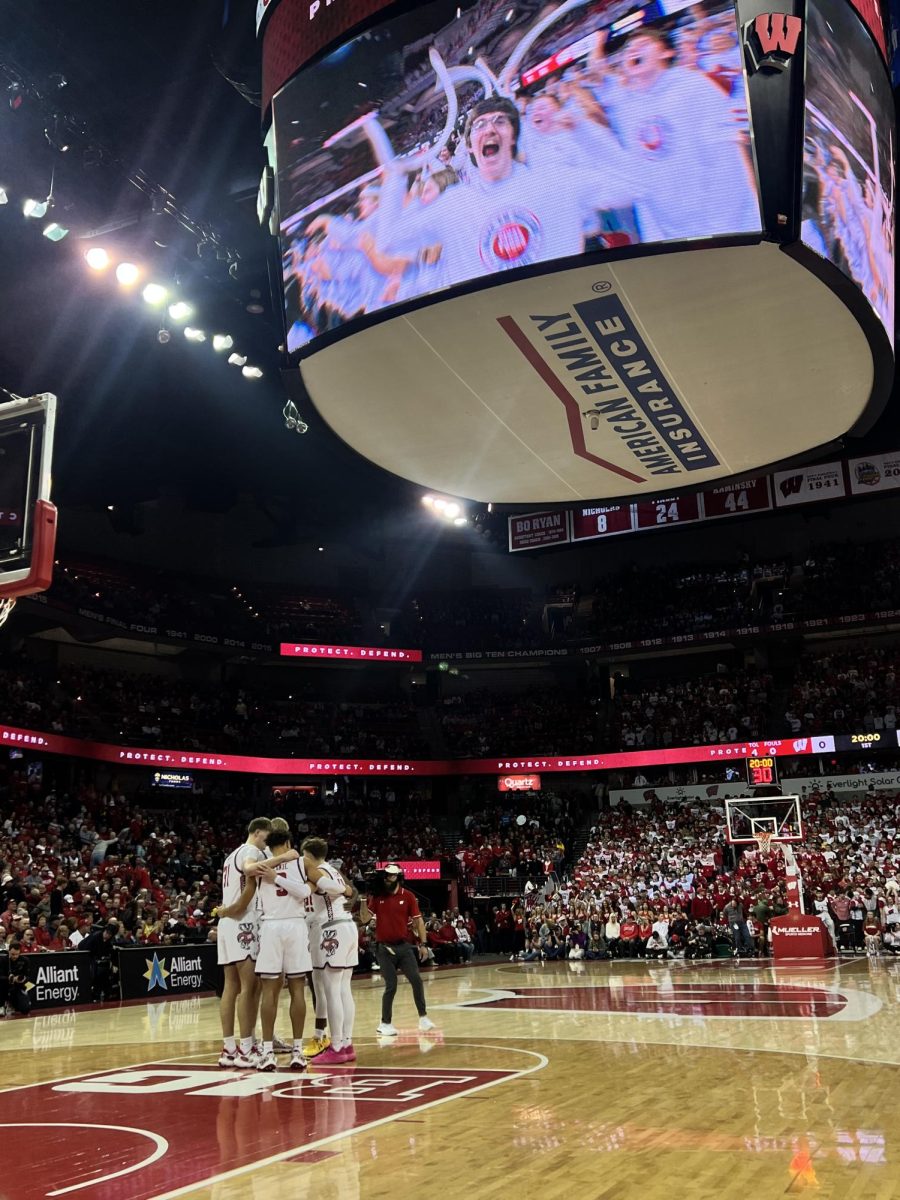The good news: Wisconsin receivers Nick Toon and David Gilreath should be back on the field when the Badgers go to Michigan State Saturday.
The better news: The list of seven guys that hold the key to Wisconsin’s success in Big Ten play does not include either of those returning wideouts.
Bonus!
Yes, Gilreath gives quarterback Scott Tolzien a threat to stretch the field. Toon’s return means there’s finally a reliable target who will go over the middle without getting all nervous in the surface.
But as usual, Wisconsin’s strength is in its offensive line and running game. And don’t you forget it.
“I came here to run the ball,” center Pete Konz said. “I didn’t come here so Scotty could throw the ball 40 times a game.”
Now that the Badgers are done with the high school teams of its schedule – or they will be as soon as the Minnesota game is over – the games get harder and the physical wear increases. And why get battered when you can do the battering yourself?
Yes, Wisconsin has a capable, experienced quarterback, veteran receivers and one of the top tight ends in the land. But completions don’t wear a defense down; running the ball does. So as conference play continues, expect to see John Clay’s carries increase.
Clay was overheard after practice Tuesday all but challenging Michigan State linebacker Greg Jones to meet him in the hole. That should be a fun collision.
Clay is listed at 248 lbs much in the same way passes to a Taylor Swift concert are listed as “just” $40 on Ticketmaster. In reality, he might be 260 lbs. He might be heavier than that. The only sure thing is, he’s a lot more running back than most defenses are used to.
Jones, the two-time Big Ten preseason defensive player of the year is a freakishly athletic, 6-foot-1, 240-pound beast of a football player. He makes interceptions, gets sacks, leads his team in tackles and pulls the team bus all the way to the airport just because he can.
The two players are pretty familiar. Last season, in UW’s 38-30 win, Clay had 32 carries for 142 yards and a touchdown. Jones was the tackler on nine of those carries. The linebacker finished the game with 14 tackles; 64 percent of his tackles involved taking on Clay.
Another fun fact: UW led 21-7 at halftime that game, behind one Clay touchdown run and two Tolzien passes to tight end Garrett Graham. Clay received seven carries in the first half. So yes, that means Clay got the ball 25 times in the second half. Ignoring two garbage time touchdowns in the last 2:07 of play, UW had itself a 38-17 win.
On one third-quarter drive, Clay was handed the ball 10 times as the Badgers took 7:33 off the clock in a scoring drive.
“We take pride on being able to run the ball and also keep possession of the clock in our hands,” Clay said. “We like to grind our game, take three, four, five minutes off the clock.”
That’s how Wisconsin will win football games.
There are still questions about how the UW secondary will fare when facing guys like MSU’s Kirk Cousins, or further down the road, Ohio State’s Terrelle Pryor and his receiving duo of DeVier Posey and Dane Sanzenbacher. A good way to remedy that potential weakness is to not let the other team get a chance to test the Badgers’ defensive backs.
The detractor from Clay and the running game is how UW’s Heisman candidate has fared against top teams. Last season, the Badgers only managed 97 rushing yards – Clay accounting for just 59 – in their loss to the Buckeyes. Clay only had 75 yards against Iowa one week later (though he missed time due to injury). The Badgers need to be able to run the ball effectively to have success.
Around the Big Ten, questions at running back abound. Iowa is down to one healthy back, just weeks after touting how its backfield depth was going to be a strength. The Hawkeyes had just 29 yards on the ground in their loss at Arizona. Penn State’s performance can be partially attributed to starting a true freshman at quarterback and partially to tailback Evan Royster’s Carmen San Diego impersonation.
Take away the running game and defenses know what to expect. When defenses don’t know what to expect, like in the case of Lance Kendricks and play action passing against Arizona State, you’ve got a good chance to win ball games.
And when you’re still effectively running the ball toward the end of the game, it wears on the opposing defense.
“Especially in the fourth quarter, [they] start to get really tired and they’ve got John Clay running down their throat, they have our 320-pound offensive lineman (Ryan Groy) running down their throat,” defensive end J.J. Watt said. “They’re going to start getting tired, they’re going to start making errors.”
Wisconsin’s three-headed monster in the backfield should only have been a tool to get Clay through non-conference play unscathed. James White proved how effective he could be as a change-of-pace back, the kind of guy the Badgers envisioned Lance Smith being. But in the second half of Big Ten games, look for less of the Floridian Flash and for more of Racine’s finest battering ram.
Establishing the run sets up the pass. Establishing the run wears down the defense. Come fourth quarter time, the Badgers are ideally in position to either mount a necessary comeback or pound the ball away to kill the clock. If that ever-touted, stereotypical, smash-mouth UW running game is working, that is.
Wisconsin can consider itself one of the big boys in the Big Ten once it proves it can run on the other contenders. If the Badgers’ big strength is forced upon the Buckeyes and Hawkeyes and Spartans of the world, UW should be able to close out close games. If Clay and Co. get stuffed on the ground in the contests that matter most though, they can kiss their BCS bowl dreams goodbye.
Adam is a senior majoring in journalism. Think Clay will come up big during the conference season? Let him know at [email protected].













